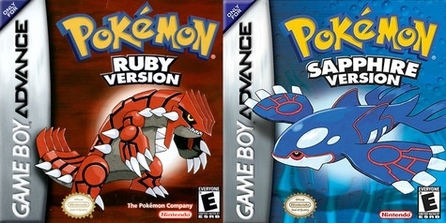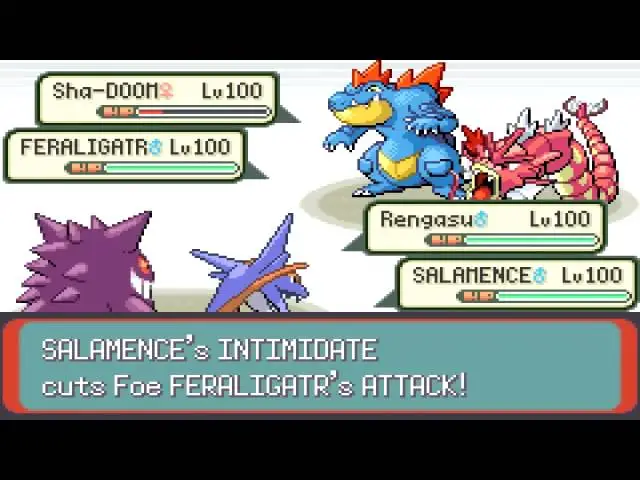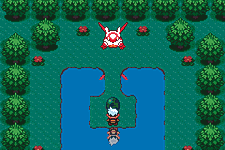Twenty-two years ago today, two of the most iconic games of our childhood launched all the way in Japan: Pokémon Ruby & Sapphire. These games revolutionized the genre and the industry standards by maximizing the capabilities of the Game-Boy Advance.
Let’s dive deeper into why these games were revolutionary for the video game industry and explore the numerous curiosities these milestones have to offer, both for veterans and younger gamers.

Pokémon: Happy Twenty-second Birthday, Pokémon Ruby & Sapphire!
Pioneers of the GBA
Pokémon Ruby & Sapphire, launched in 2002, were among the first games for the Game-Boy Advance (GBA), and are considered pioneers of handheld gaming. That is because of the level of innovation, attention to detail and optimization that the games were able to provide, even on such a limited platform.
These games showcased enhanced graphics for their time, providing colorful and detailed textures that represented a significant upgrade from their Game-Boy Color predecessors. The sound quality also improved remarkably, enriching the gaming experience even further and quickly capturing the attention of millions of players in the first weeks following their release.
New Gameplay Mechanics

While the graphics and sound updates were impressive, the true innovation resides in another aspect of those games: the introduction of new gameplay mechanics, along with a total of 153 new Pokémon to catch and train.
Some of the “innovative mechanics” introduced by those games were Double Battles, which allowed players to use two Pokémon in battle instead of one, laying the ground for the staple of modern-day Competitive Pokémon, along with Multi Battles, which are similar to the latter but with two trainers fighting side-by-side, each controlling only 3 of their Pokémon.
Other major innovations were Innate Abilities and Natures; the former consists in an ability unique to a certain species, while the second corresponds to an increase of a certain statistic and the decrease of another, not shared by all Pokémon of the same category.
But that’s not all—in the third generation, we also saw the introduction of one of the fan-favorites features in the history of the whole saga: Underground Bases.
Underground bases allowed players to reach a unique space under the map where they could dig up treasures and create their own cozy space, adding pillows, furniture and what’s more. Sadly, this feature has been discontinued and remains one of the most acclaimed and missed additions to a game, along with Mega Evolutions.
Curiosities about Ruby and Sapphire
There are lots of fascinating facts regarding the third-generation games of the Pokémon saga, but the most interesting ones are the popularity of said games, the cultural impact they had and the innovative ways to catch new Pokémon that GameFreak came up with while working on such a limited console.
Popularity and Sales
Pokémon Ruby and Sapphire experienced immediate success upon their release, achieving approximately 4.4 million sales within six weeks. They became the first games to sell 2 million copies in Japan since another milestone of the video game industry, back in 2001—Final Fantasy X. The games were so successful that they were highlighted on stage at E3 2003 as a symbol of the significant innovation and impact brought to the industry by the Game Boy Advance. As of 2023, Ruby and Sapphire have reached a total of around 16.22 million units sold. However, they did not surpass the popularity of their predecessors: Pokémon Red and Blue sold nearly 31 million units, while Gold and Silver sold over 23 million units.
Latios, Latias and the e-Reader cards
Another important factor in the popularity of the third generation of Pokémon games was the addition of e-Reader support. Nintendo released special cards known as Battle e-Cards, which allowed players to face rare and version-specific Pokémon, aiding them in completing the Pokédex. Among these were particularly special cards called Eon Ticket cards, which enabled players to access Southern Island, where they could encounter either Latios or Latias, depending on the version of the game being played. Additionally, Ruby and Sapphire could connect to the GameCube game Pokémon Colosseum, allowing players to obtain a copy of the Mythic Pokémon Jirachi and preview the movie Pokémon: Jirachi Wish Maker.

Pokémon Ruby and Sapphire are iconic games that have left a lasting mark on the history of video games as pioneers that pushed the capabilities of the Game Boy Advance. By introducing a multitude of new creatures, gameplay mechanics, and e-Reader support, these titles revolutionized handheld gaming and set new industry standards. Their legacy continues to resonate with both veteran players and younger players alike, ensuring their place in gaming history.